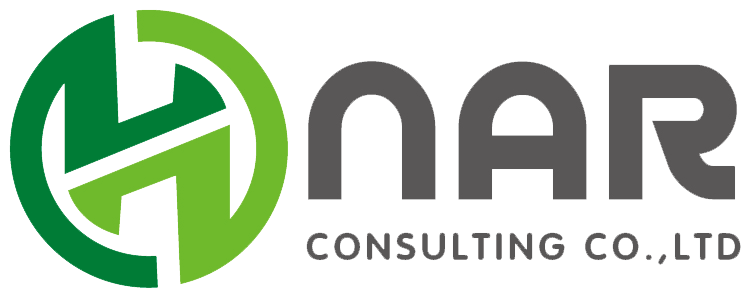Information Details
The strongest plastic limit order enforcement! Non-degradable plastic bags will gradually stop using
Release time:
2021-02-23 15:33
The treatment of plastic pollution has become the general consensus of the international community,2021YearOn February 9, the Office of the State Administration, the General Office of the Ministry of Housing and Urban-Rural Development, and the General Office of the National Development and Reform Commission issued the ''Notice on Doing a Good Job in the Recent Key Work of Domestic Waste Classification in Public Institutians''Notice on the recent key work of domestic waste classification in public institutions6 o'clock arrangement. The 6-point arrangement includes:
1. Gradually standardize the classification categories and signs of domestic waste; 2. Vigorously promote green office; 3. Take the lead in stopping the use of non-degradable disposable plastic products; 4. Further stop the waste of catering; 5. Continue to carry out voluntary service actions for domestic waste classification; 6. Solidly promote the construction of domestic waste classification demonstration sites.
Among them, No.3 requirements,ToBy the end of 2021, public institutions will completely stop using non-degradable disposable plastic products in the list of non-degradable disposable plastic products stopped by public institutions (the first batch).
"Non-degradable"What do you mean??
The List of Public Institutions to Stop Using Non-degradable Disposable Plastic Products (First Batch) clearly states that the use of non-degradable disposable plastic lunch boxes, non-degradable disposable plastic tableware, non-degradable disposable plastic straws, and disposable plastic cups and beverage cups with a thickness of less0.025mm ultra-thin plastic shopping bags, etc.
The document states that non-degradable material refers to polyethylene (PE), polypropylene (PP), polystyrene (PS), polyvinyl chloride (PVC), ethylene vinyl acetate (EVA), polyethylene terephthalate (PET) and other non-biodegradable polymer materials, that is, all containing PE, PP, PS, PVC, EVA, PET are non-biodegradable polymer materials.
This is the first time that the National Development and Reform Commission has made clear what is meant by a negative list."Not degradable".
How to popularize degradable plastics step by step?
my country has fully considered the differences of various regions and industries. In accordance with the principle of highlighting key points and orderly advancement, it distinguishes key cities, cities above the prefecture level and relevant county-level cities.In 2020, 2022 and 2025, the overall work of plastic pollution control will be actively and steadily promoted step by step and in different fields.
Public institutions refer to state organs, institutions and organizations that use financial funds in whole or in part. Such as government agencies at all levels, institutions, hospitals, schools, cultural and sports science and technology venues.
The State Administration, the Ministry of Housing and Construction, and the Development and Reform Commission issued a document requesting that public institutions arriveBy the end of 2021, the use of non-degradable disposable plastic products will be completely stopped. Let government departments and public service agencies take the lead in demonstrating, and the next step is to promote it as the case may be. IfFull implementation of biodegradation standards,Capacity will not keep up.
China's huge market demand, the relative shortage of biodegradable materials, even in Germany, BASF also put its biodegradable materials to improve350 euros/ton.
Industry insiders believe that full biodegradation may be implemented in some key cities, key industries, and public institutions, while semi-degradation may be implemented in small businesses, suburbs, and villages. The central region first implemented full biodegradation, followed by coastal areas. In terms of law enforcement, it should be relatively relaxed, give priority to guidance, grasp the rhythm, and advance in an orderly manner.
InBy the end of 2021, it is likely that the definition of degradable plasticsGB/T 20197-202X new version of the national standardAlready landed. So, there is not much time left for the market to prepare.
Degradable Plastics Testing Services
Xinanrun (Beijing) Consulting Co., Ltd. focuses on chemical regulatory compliance consulting services, and is committed to providing professional analysis, testing, testing, research and development, regulatory consulting and other technical services for pharmaceutical and chemical enterprises, consumer goods manufacturers and large multinational companies. Around our biodegradable plastics testing services, the following for some of the issues of concern and testing services are described:
Why do we need to do biodegradable plastic testing?
The National Development and Reform Commission, the Ministry of Ecology and Environment and other 9 departments jointly issued the "Notice on Solidly Promoting the Control of Plastic Pollution" (commonly known as the "plastic ban") clearly pointed out that emerging areas such as takeout, e-commerce, and express delivery are all prominent areas of plastic pollution. Starting from January 1, 2021, non-degradable plastic bags, plastic tableware and disposable plastic straws will be banned.
If there is no qualified biodegradation report, the production and sale of the product will be prohibited.
2, traders hold biodegradable plastic testing report, will take the initiative in the market;
3. After plastic enterprises transform into degradable plastics, they need testing reports during research and development and before shipment.
Biodegradable Plastics Testing Services and Standards

 ,
,

Testing Items and Standards of Photodegradation Plastics
Photodegradable material refers to the material under the condition of light aging (xenon lamp aging, ultraviolet aging, carbon arc lamp aging, etc.) macromolecules cracking decomposition reaction, gradually lose mechanical properties, to achieve the purpose of decomposition.
Thermal oxygen degradation material refers to the hot air aging conditions, the material macromolecules in the case of high temperature by oxidation decomposition into small molecules or inorganic substances, so as to achieve the purpose of degradation.
Photodegradable plastics and thermal oxidative degradable plastics are broken plastics and should not be attributed to biodegradable plastics.
Serial Number |
Classification |
Product range |
1 |
Degradable packaging film products |
Shopping bags, garbage bags, packaging film, gloves and other film products |
2 |
Other Degradable Packaging Products |
Plastic lunch boxes, cups, plates and other sheet products and foam nets, foam sheets, foam fast tableware and other foam products |
Degradation Project |
Discriminant mode |
Discriminant mode |
Discriminant mode |
Degradation determination |
Retention rate of tensile elongation at break ≤ 5% |
Weight-average relative molecular mass reduction rate ≥ 80% |
The proportion of weight average relative molecular mass less than 10000 is 20% or more. |
Testing standard for photooxidative degradation plastics
GB/T 20197-Definition, classification, labeling and degradation performance requirements of degradable plastics:
Degradable Polyethylene Film for QB T 2461 Packaging
GB/T 18006.1-General technical requirements for plastic disposable tableware
GBT 16422.2 plastics-Methods of exposure to laboratory light sources-Part 2: Xenon arc lamp
ASTM D 5510 Standard Specification for Thermal Aging of Oxidative Plastics;
Test method for heat aging of GBT 7141 plastics
GB/T 32163.2-Evaluation specification for eco-design products-Part 2: Degradable plastics
If you need testing services in the development, production and sales of degradable plastics, or have any questions, please contact us!








